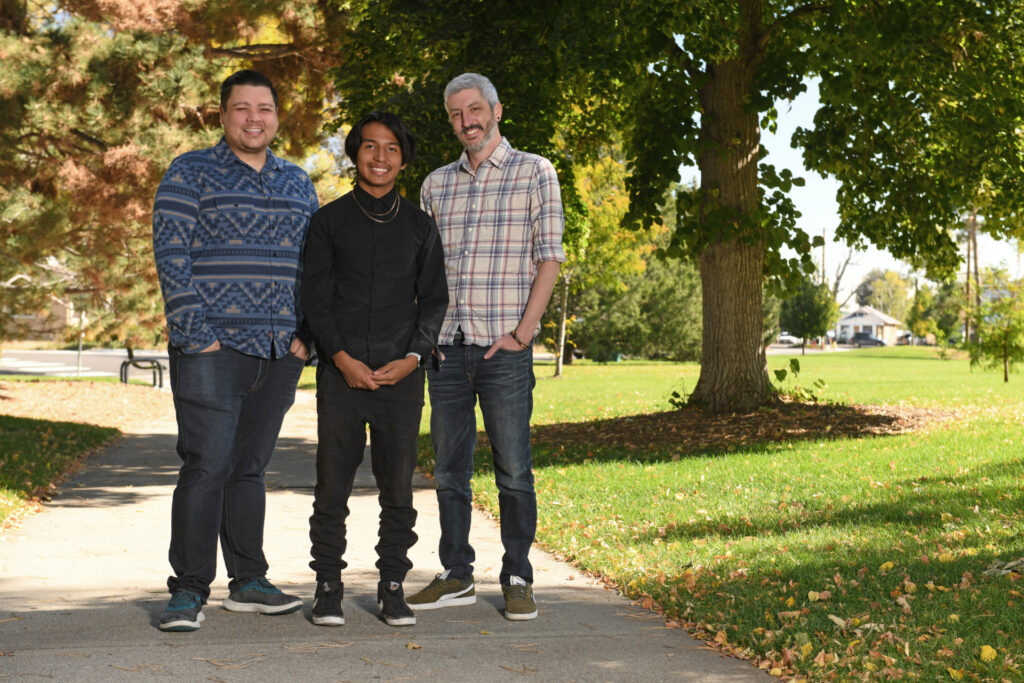Trans Visibility In Child Welfare

The International Transgender Day of Visibility (TDoV) is celebrated annually on March 31. The holiday was founded by the American transgender activist Rachel Crandall of Michigan in 2009 due to the lack of LGBTQ+ events celebrating transgender people. It is an annual day dedicated to celebrating trans and non-binary people and raising awareness of discrimination faced by transgender people. TDoV is a day to acknowledge and celebrate the living transgender community in addition to the annual Transgender Day of Remembrance, which mourns the murders of transgender people. The first International Transgender Day of Visibility was held on March 31, 2009, and is continued worldwide.
Trans Visibility In Child Welfare
By Nicole Drake
Visibility is the act of holding space for individuals to be seen as their authentic selves, beyond the narrow definitions of their identity. In child welfare, we are charged to not just see but to support individuals with rich identities in creating their own definitions of safety, permanency, and wellbeing. This challenges us to move beyond the narrative of a single story. Novelist Chimamanda Adichie describes how she found her authentic cultural voice in her TED Talk — and warns that if we hear only a single story about another person based on facet(s) of their identity, we risk a critical misunderstanding(*1). Similarly, E.R Green and L. Mauer, authors of Transgender 101, implore us to move beyond a single narrative of gender; “A particularly challenging truth for those who wish to be our allies is that there are hundreds and hundreds of different ways of “being” trans, and that even trans people themselves don’t often agree on what the issues are, or ought to be… Understanding the many ways there are of being trans, in fact, is really just a subset of an education in the many ways there are of being human. It’s not just trans people who are trying to move beyond the binary – it’s all of us. Each of us is on a journey to find our own truth, a truth that more often than not lies somewhere between the poles of human experience.”(*2)
A teacher I had in grade school was adamant the two most important questions we can ask ourselves are, “how big is this picture?” and, “how do I know what I think I know?” For me, asking these questions may just be one answer to how child welfare workers create space for visibility. Through my time in this field, I have been given more glimpses into the stories of trans and non-binary individuals. I now realize what I may have missed during my time as a caseworker; questions I never asked that would have opened the door to stories I never heard, and opportunities to affirm young people as whole, just as they are. I invite you to take a journey with me, through stories of different youth served in our system, compiled into a single story of my what might have been.
Had I asked young people about their pronouns or introduced myself with mine, perhaps I would have heard the story of the young person who identifies as “they/them” or “ze/zir”. I might have heard their fear in asking their caregiver to refer to them as they identify and their discomfort in not being seen and embraced as who they are. I might have sought out resources like the Family Acceptance Project(*3) and understood that a tiny shift in caregiver behavior (such as using pronouns or other affirming behaviors) makes a big difference in decreasing risk for suicide and other serious health concerns.
Had I known the story of the youth who felt their caseworker assumed their needs as a non-binary youth were met but never asked, I might have been more curious during monthly home visits. Perhaps I would have asked how they identify more than once. I may have been relentless in reviewing protections for non-discrimination with every youth, regardless of their identity, highlighting their ability to access undergarments, clothing, and room assignments that align with their gender identity, rather than the sex they were assigned at birth. I would have embraced any discomfort or confusion from gender conforming youth who questioned this review as a learning opportunity. I would have offered to them how important it is to not assume someone’s gender identity. I would have explained that by reviewing all protections with all youth, we create space for a safe disclosure.
Had I flipped the script on the statement by one youth in foster care to “take this sh*t seriously!” to hear “don’t assume that I am trying on different gender identities as manipulation or desire for special treatment”, I might have further heard their truth, which was: “there is a lot of lip service support from professionals and caregivers but very little material support”. I would have been gifted their story that, “everyone claims their needs are a priority but treat literally anything else as more important, that material support for a youth’s LGBTQ+ identities comes at a glacial pace, if at all.” In hearing this, I could have better advocate for their needs. I may have educated myself on gender affirming care, so I understood there is no one-size fits all in achieving gender congruence(*4). I would have known that being trans doesn’t always include seeking surgery to have a body that aligns with gender identity.
Had I read experiences of trans and non-binary individuals like those presented in the article Six people told us their favorite things about being transgender or cultivated relationships with those who are gender diverse, I would have had many narratives to share. I may have shared a story of resilience not in spite of but because of their identity: “the best part [of my identity] has been turning features that used to hurt me into tools of resilience… Embracing your identity feels like liberation: I now know that I am not inherently meant to be ridiculed, that my emotions are as valid as another’s, that I’m not off so much as I am on to something.”
Had I known about the time lost, I might have found more connections for the trans and non-binary youth I served, so they could see what self-acceptance looks like. “I started my transition at 36, and I wish I could have found the courage and the self-acceptance to begin earlier. Not that there was something I could have done as a woman in my twenties that I can’t do now, but that I spent so long hating myself. Decades spent self-policing when I could have just been me.”(*5) Most of all, I would have seen the answer to the question, “how big is this picture of gender identity?” is infinite and limitless.
(1) Chimamanda Ngozi Adichie • TEDGlobal 2009. https://www.ted.com/talks/chimamanda_ngozi_adichie_the_danger_of_a_single_story/comments
(2) Finney Boylan, J. (2015). Transgender “101”: Introduction. In Green, E. R., & Maurer, L., Teaching Transgender Toolkit: A facilitator’s guide to increasing knowledge, decreasing prejudice & building skills (p. 70). Planned Parenthood of Southern Finger Lakes. http://www.teachingtransgender.org/
(3) https://familyproject.sfsu.edu/
(4) https://genderspectrum.org/articles/understanding-gender. Finding congruence is an ongoing process throughout each of our lives as we continue to grow and gain insight into ourselves. It is most often found through exploration. For some, finding congruence is fairly simple; for others, it is a much more complex process. But the fundamental need to find gender congruence is true for us all, and any degree to which we don’t experience it can be distressing.
(5)Goldfarb, A. (2018, June 4). Six people told us their favorite things about being transgender. Vice. https://www.vice.com/en/article/ywe34x/six-people-told-us-their-favorite-things-about-being-transgender
More Posts



